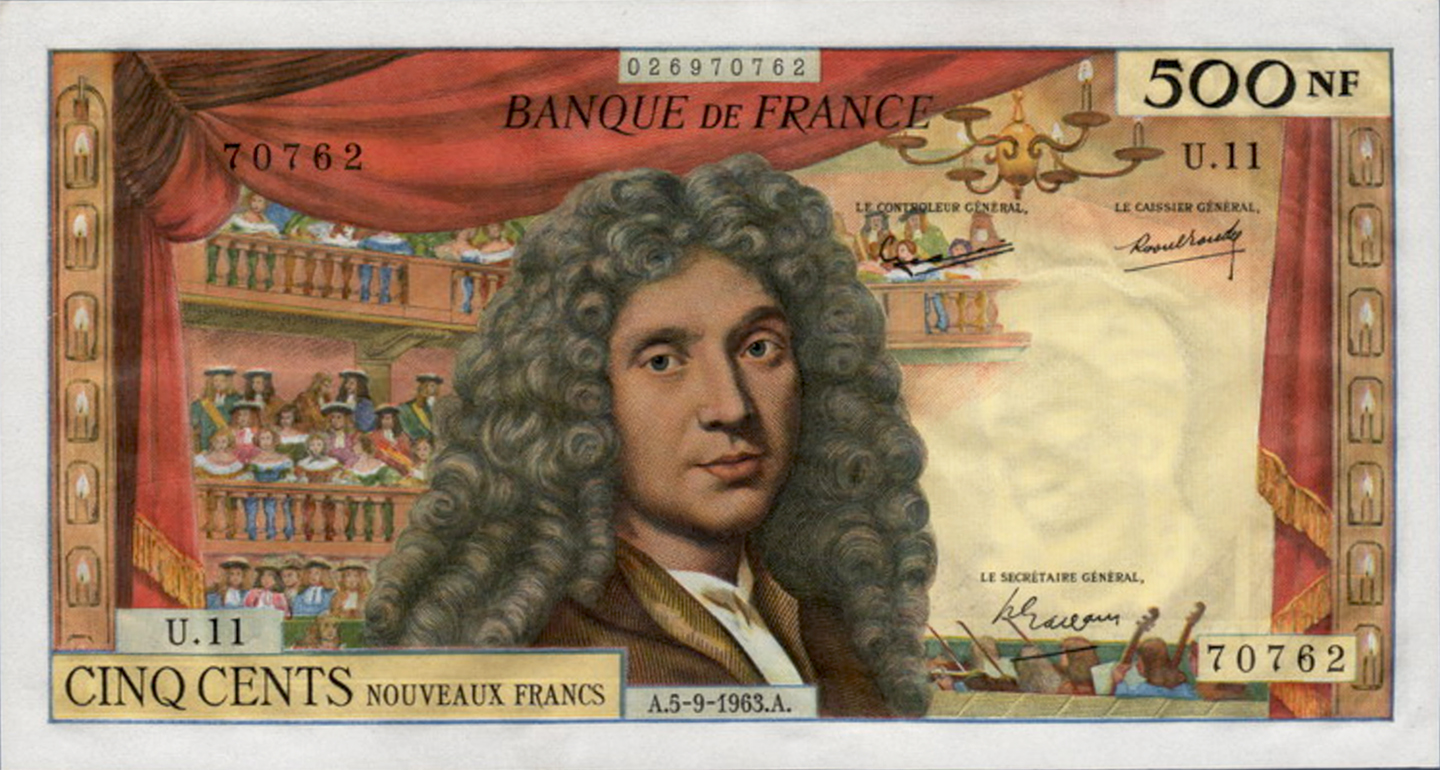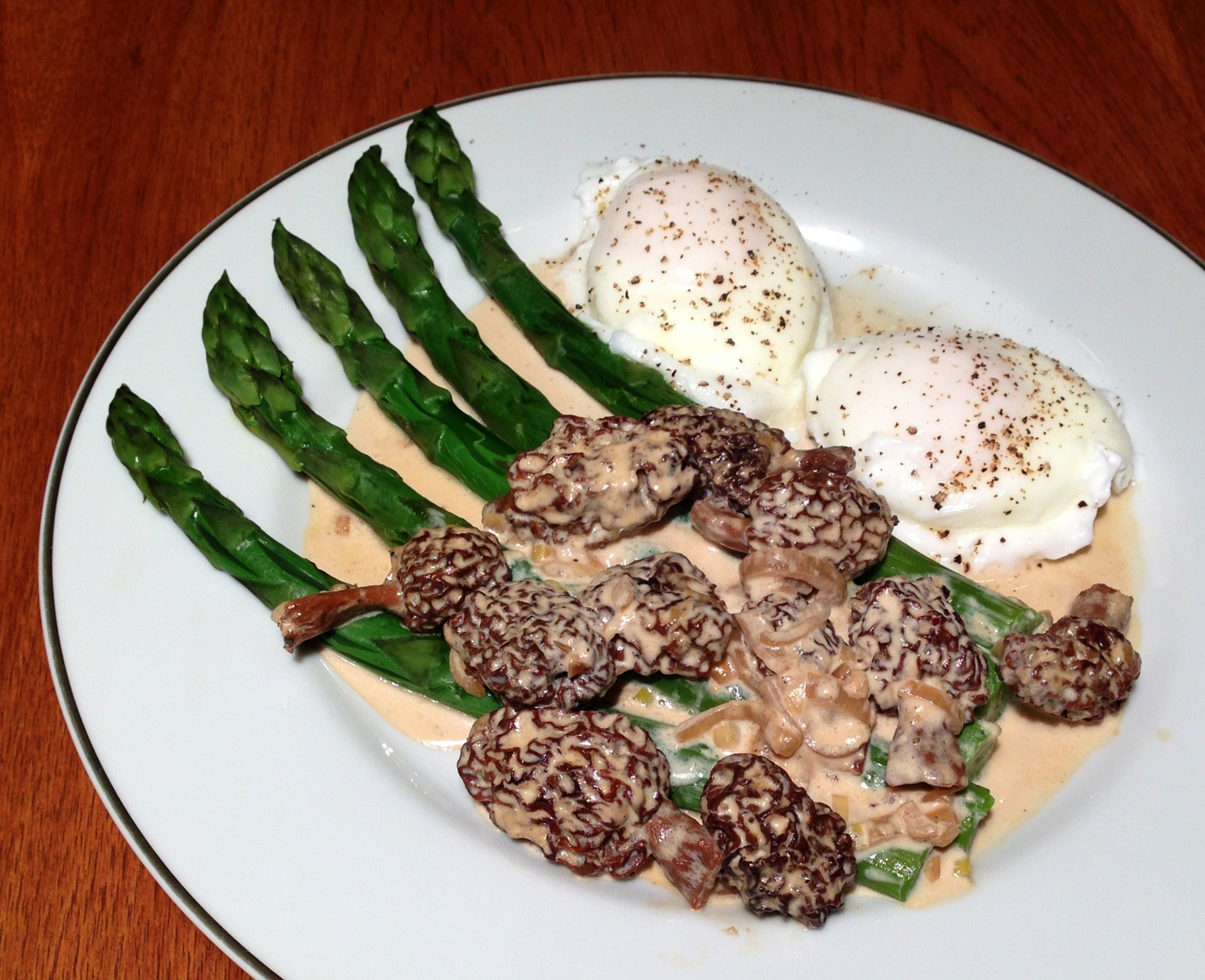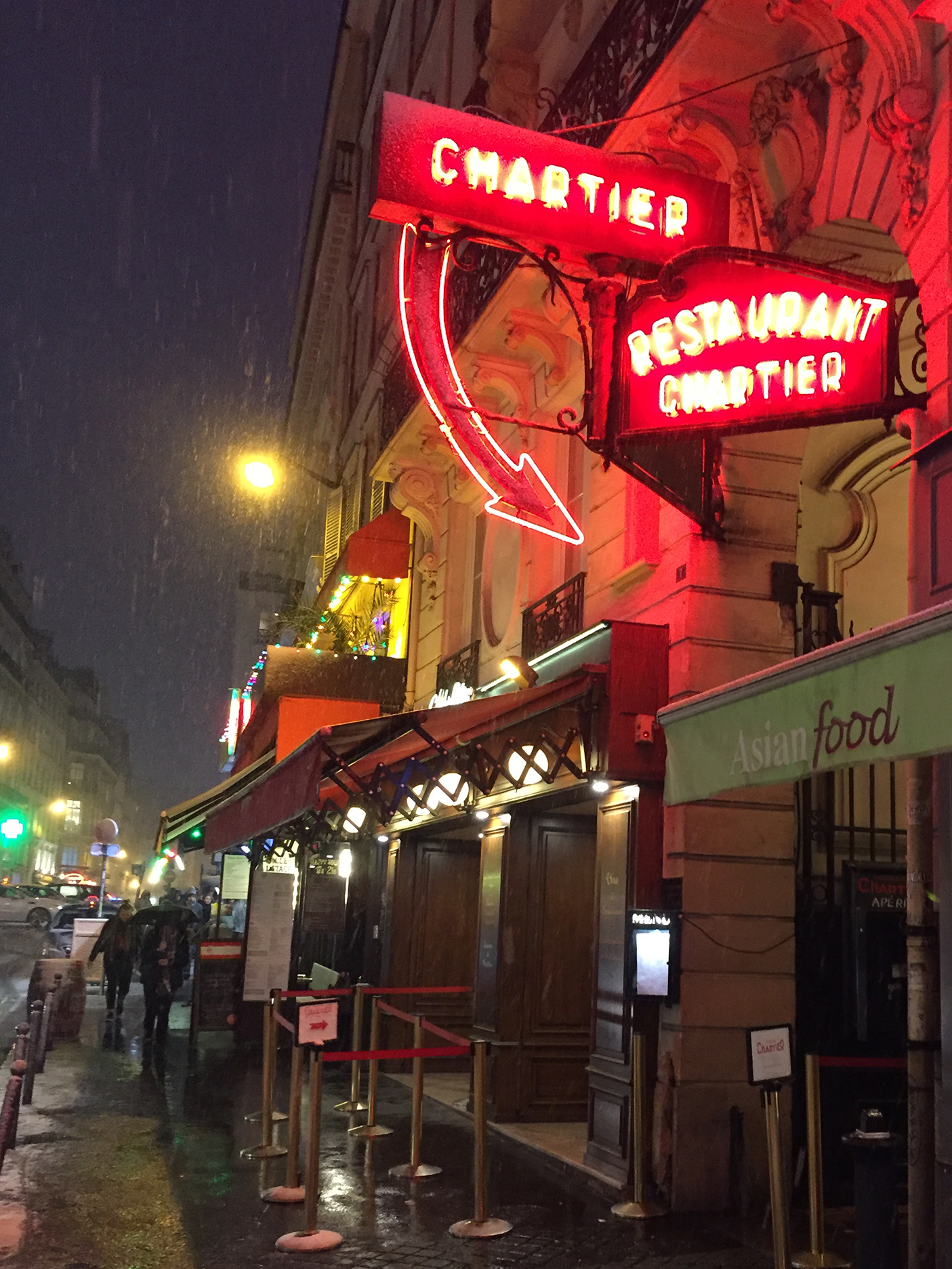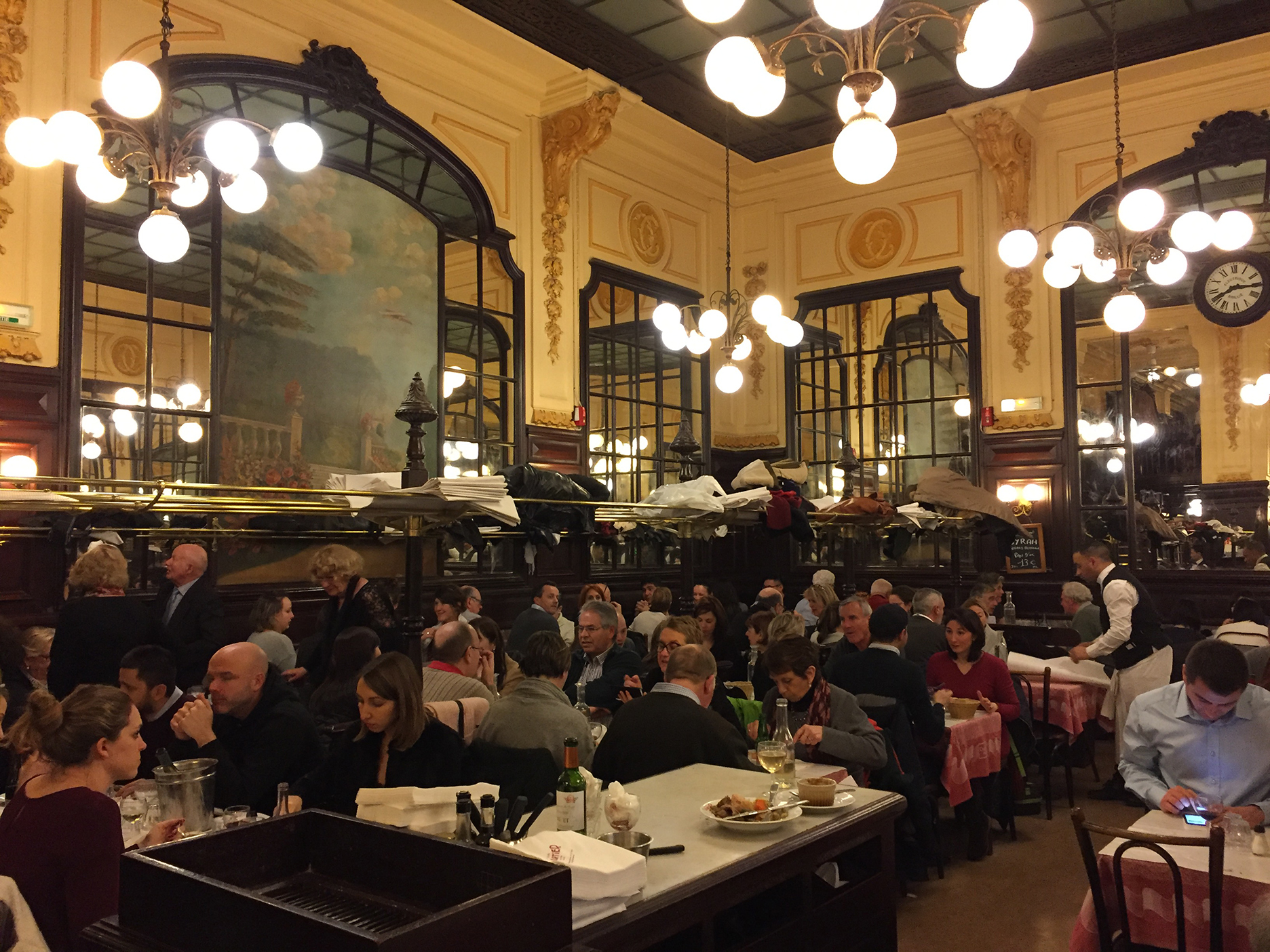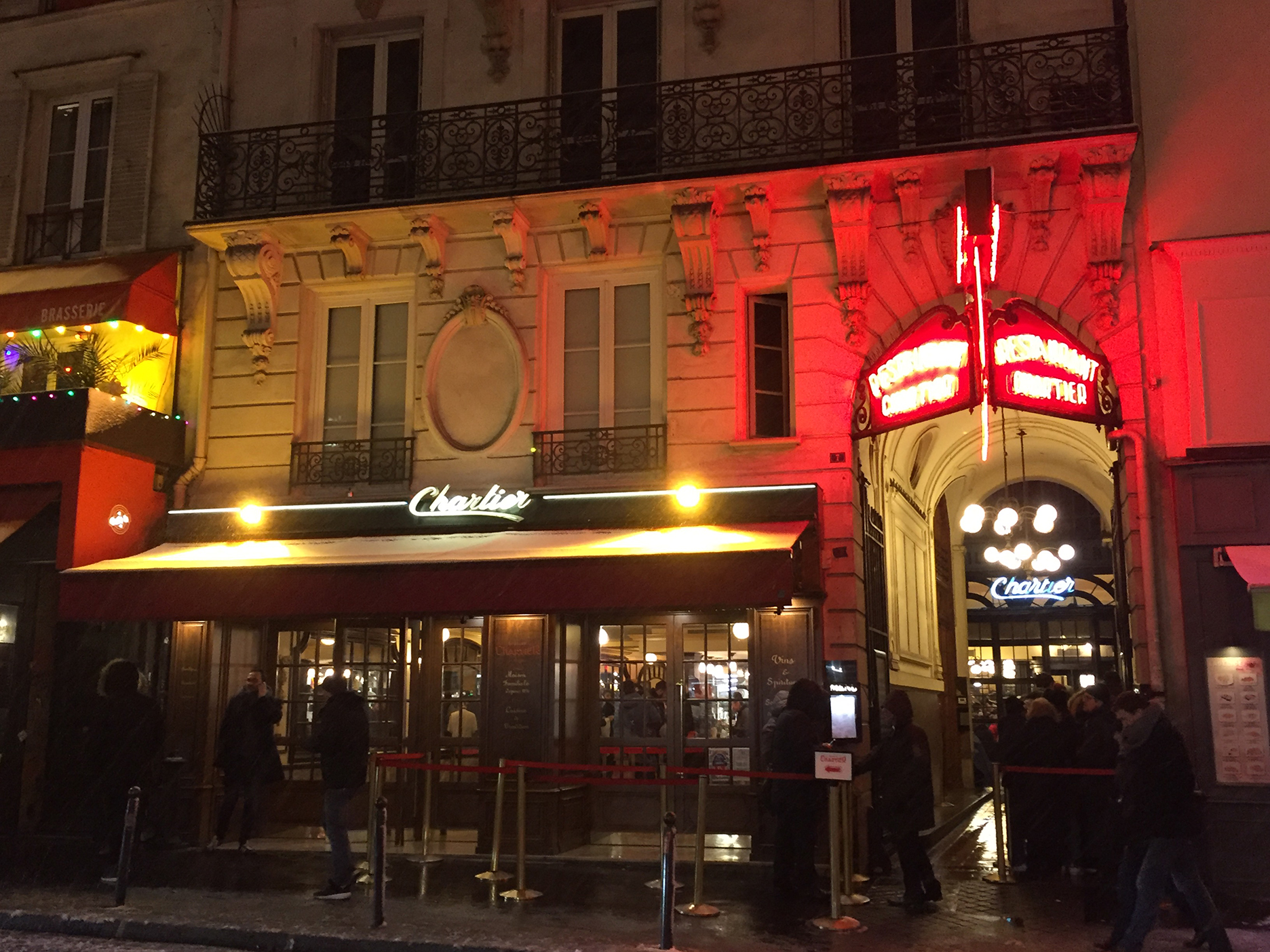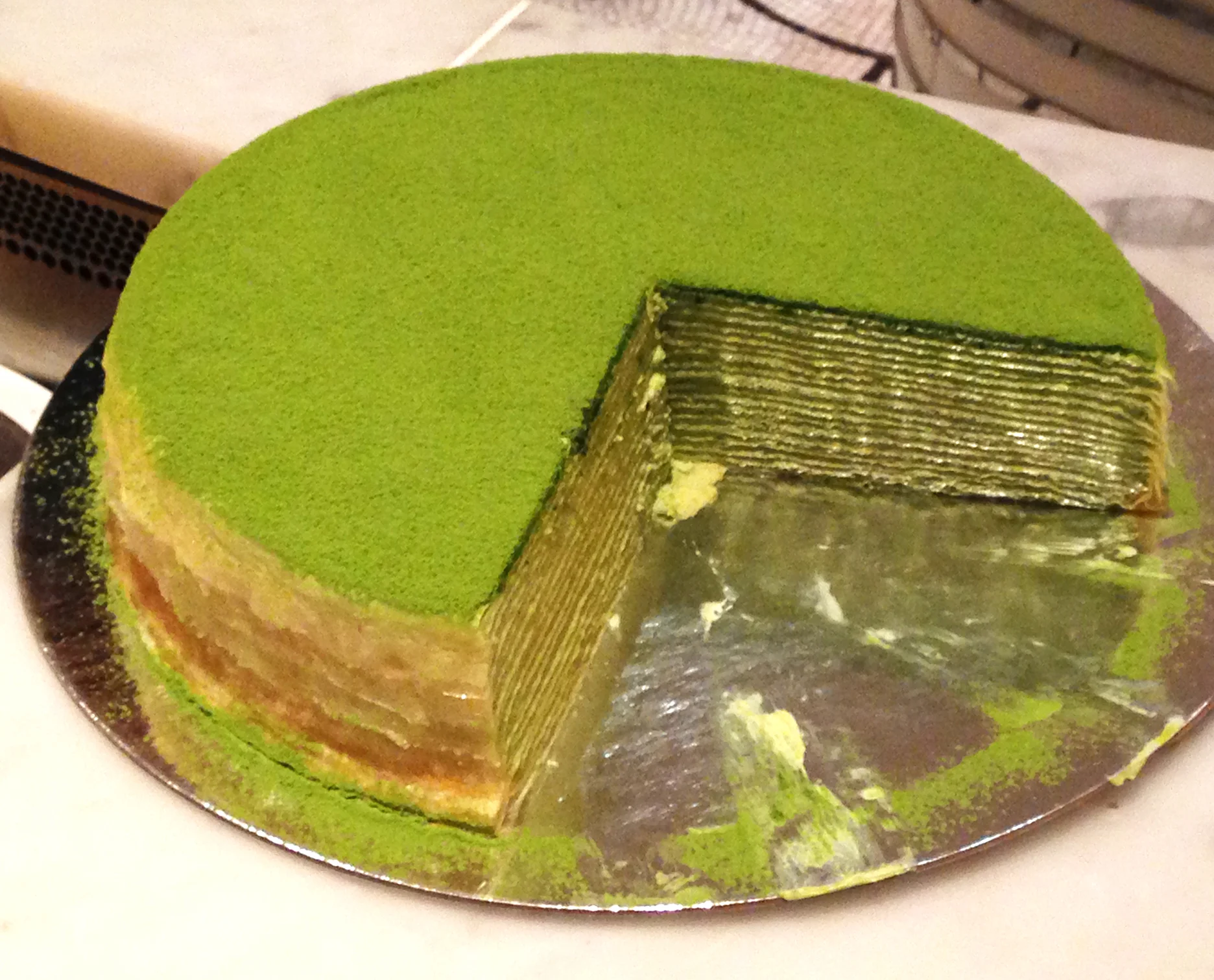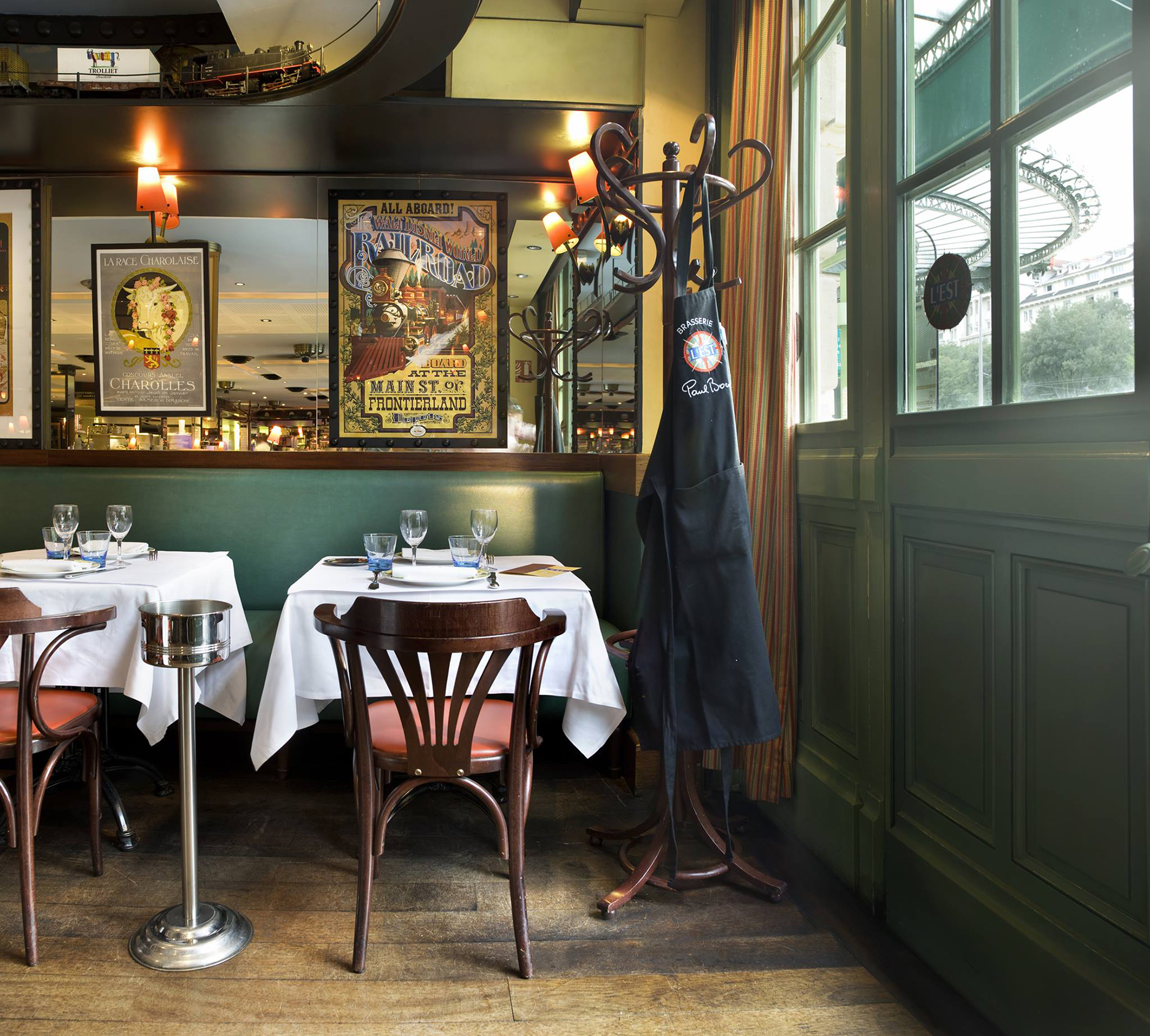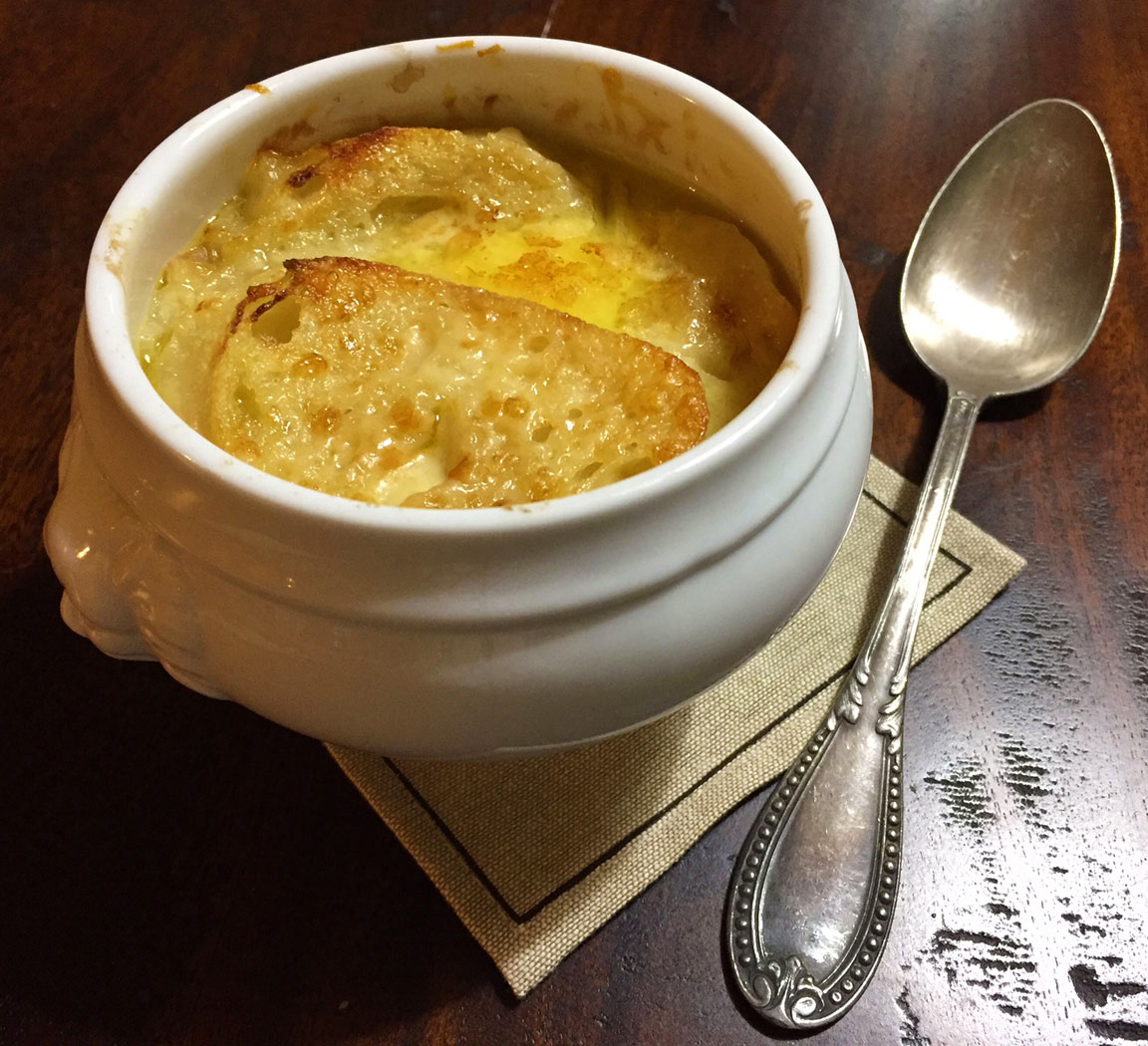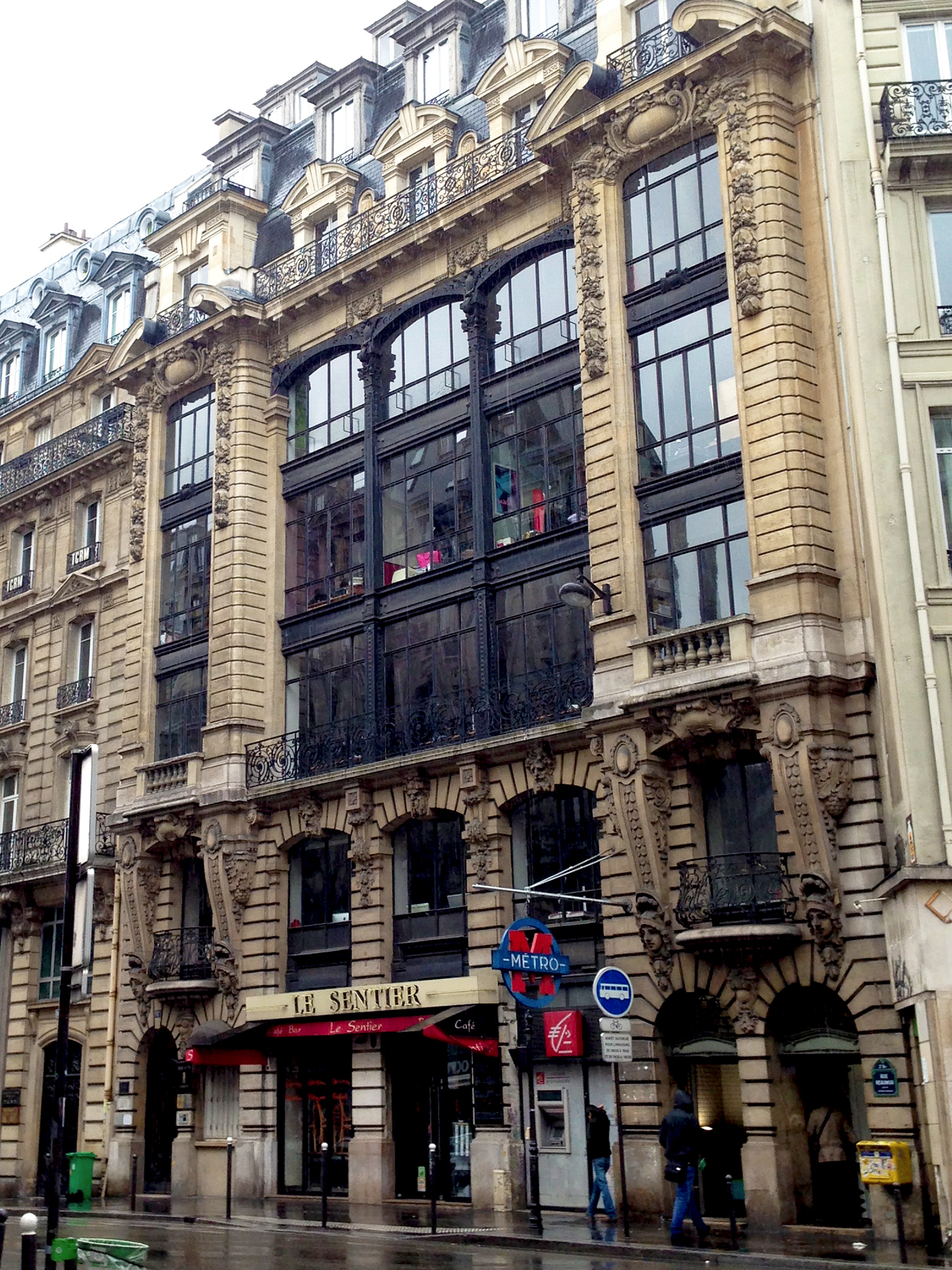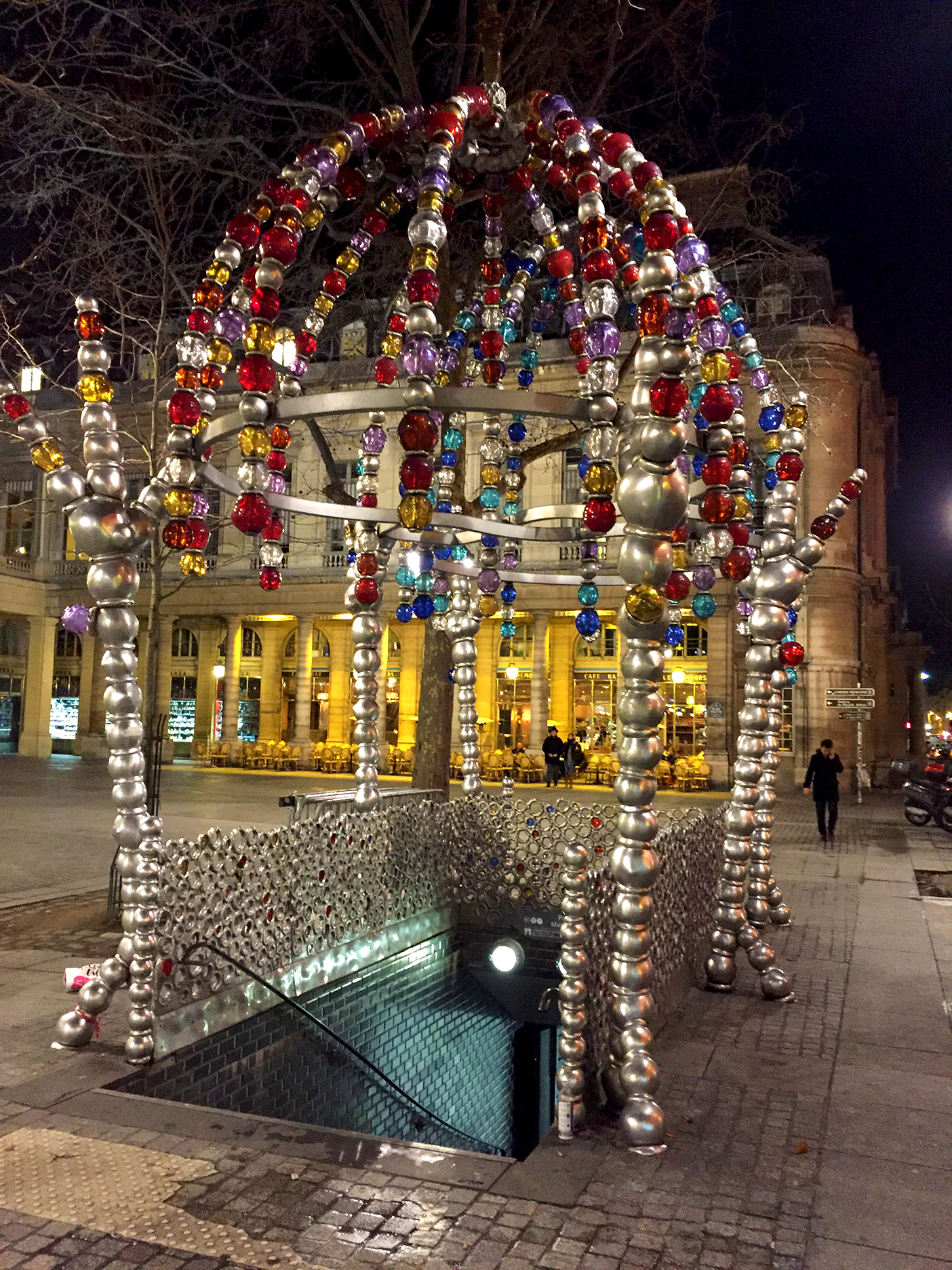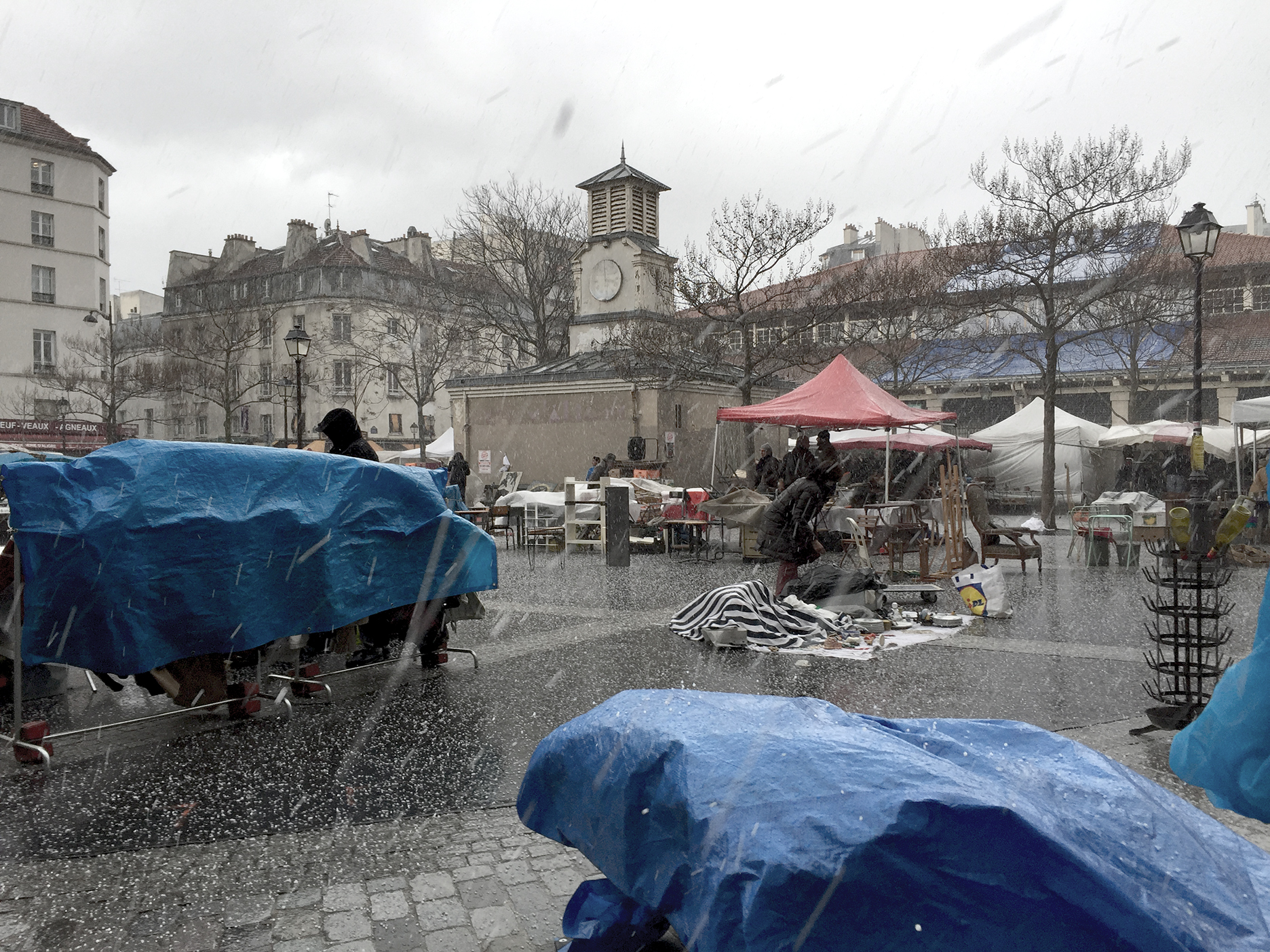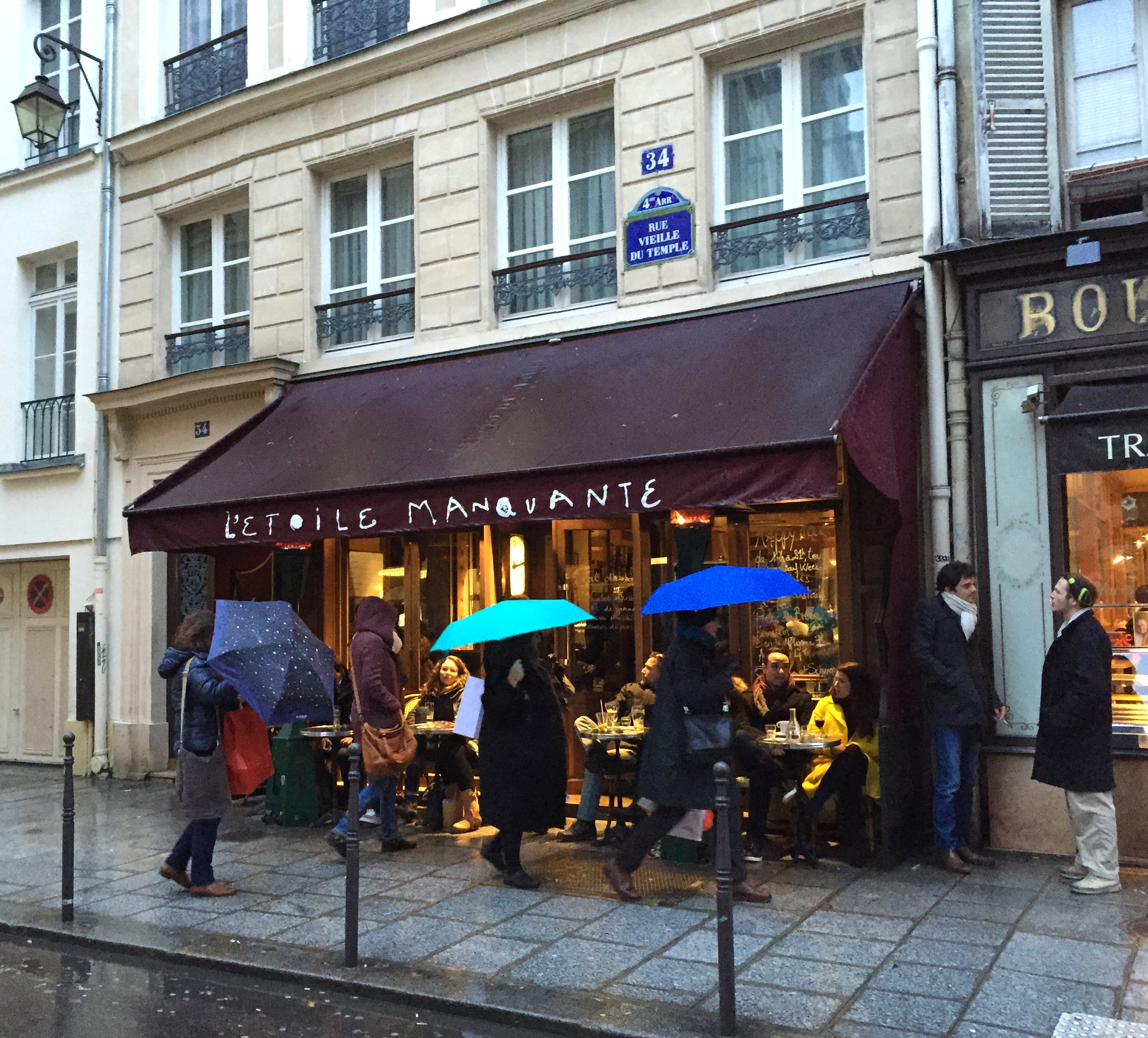I was quite disappointed when I went to the bank to exchange my francs for some dollars in preparation for my first trip to the USA: the images on the coveted billet vert turned out to be unexciting and confusing since all denominations were of identical size and, well, color. To top it off, the texture of the paper reminded me of Monopoly money and the $20 Jackson had none of the lovely crackling sound produced by a crisp 100F Corneille.
I felt the same way when the euro, la monnaie unique, was put into circulation through most of Europe on January 1st, 2002. I thought the new banknotes lacked personality and, again, seemed to be printed on "funny money" paper. It immediately made me nostalgic for the francs I grew up with, so I took the métro to La Bourse and did some lèche-vitrine on rue Vivienne in the 2nd arrondissement, where numismates congregate; I purchased six old bills that circulated in the early Sixties.
Those were the years where I stored the little money I had in my tirelire: not a pink ceramic pig that would have a fateful encounter with a hammer someday but a metal tree log with a lever to allow the coin to drop into the cylindrical container. Simultaneously, a metal chouette would come out from the side of the trunk. Oh, joy! I would regularly empty my piggy bank so that I could drop the coins into it again and watch the bird appear with each falling pièce. So, yes, I did feel that money brought me happiness; and yes, I was easily entertained…
Obviously, I prized coins more than billets. Besides, the 5F and 10F coins that my grandmothers would give me –in reward for my good grades– were made of real silver! Overall, these were interesting times moneywise: January 1960 marked the introduction of the nouveau franc which was worth 100 anciens francs. Old habits die hard: a couple of generations never got used to it and continued to talk in old francs for the rest of their lives. My porte-monnaie held new centimes, old francs (which were now worth 1 centime), and even older francs that had been minted during the Vichy government: the leftover coins from the Occupation displayed Famille-Travail-Patrie on the tail side instead of Liberté-Egalité-Fraternité. It took several years for the old coins and bills to be retired. From her portefeuille, my mother could pull out either the 1000 (old) Francs Richelieu, or the updated 10 Nouveaux Francs Richelieu, or the 10 Francs Voltaire.
The Voltaire note has always been my favorite probably because I used it the most; perhaps also because I particularly enjoyed Voltaire's sense of irony and his fight against intolerance . That particular bill was part of a series called Créateurs et Scientifiques célébres; all the new notes printed between 1959 and 1964 featured famous French writers. I can’t say that I fingered too many 500F Molière but my first allowance consisted of a 100F Corneille: of course, I recall that one with special fondness. What’s in your wallet nowadays? Like me, you probably carry mostly plastic. But if you are a nostalgic French person or a curious American, feast your eyes on the colorful banknotes below: as a bonus, I’ve paired each writer with one of their quotes.
Victor Hugo, 5 NF
Mieux vaudrait encore un enfer intelligent qu’un paradis bête
An intelligent hell would be better than a stupid paradise
Voltaire, 10 F
J’ai décidé d’être heureux parce que c’est bon pour la santé
I have chosen to be happy because it’s good for my health
Racine, 50 F
Il n’est point de secrets que le temps ne révèle
There are no secrets that time doesn’t reveal
Corneille, 100 F
La façon de donner vaut mieux que ce qu’on donne
The manner of giving is worth more than the gift
Molière, 500 NF
Il n’y a point de pire sourds que ceux qui ne veulent pas entendre
There is no worse deaf man than the one who doesn’t want to hear
Vocabulary:
L'argent fait le bonheur: money brings happiness
Le billet vert: the greenback (lit. green bill)
La monnaie unique: common currency
Le lèche-vitrine: window shopping
Le numismate: numismatist; coin, medal, and banknote collector
La tirelire: piggy bank
La chouette: owl
Le billet: bill or banknote (in the context of money)
La pièce: coin (in the context of money)
Les anciens francs: pre-1960 currency
Les nouveaux francs: post-1960 currency
Le porte-monnaie: coin purse
Le centime: worth one-hundredth of one franc
Travail-Famille-Patrie: Work-Family-Fatherland
Le portefeuille: wallet
The opening photograph of this post is my own; the photos of the individual bills come from World Banknotes and Coins.






